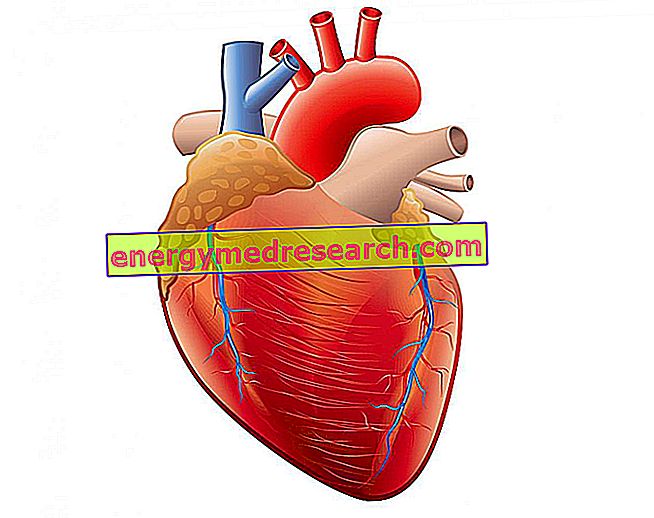
The adipose tissue of the human body can be divided into two macro-compartments:
- Subcutaneous adipose tissue: present in the deepest layer of the skin (hypodermis)
- visceral adipose tissue: localized in the space between the viscera, ie around the internal organs, such as the liver, intestine and kidneys.
Epicardial fat [ Epicardial adipose tissue (EAT)] is a special type of visceral adipose tissue that covers the heart and coronaries. Under normal conditions, it constitutes about 20% of the total weight of the organ.
Recall that fatty acids are the prevailing energy source of the heart, so this adipose tissue represents a local energy reserve for the heart muscle. In addition, epicardial fat seems useful to buffer the violent expansion of the arteries during cardiac contraction, to keep the coronary arteries in place and to protect the heart in case of blunt trauma. Very importantly, this adipose tissue regulates the homeostasis of fatty acids at the level of the coronary microcirculation, for example by accepting their deposit when they are present in excess.
The problems, as always, begin when the epicardial fat increases a lot compared to the norm, a typical condition of obese subjects. Being a type of visceral fat, the epicardial adipose tissue is elevated above all in subjects who have an android (apple) type obesity, which we know to be the most dangerous for health.
Like other visceral fat, hypertrophy of epicardial fat cells increases the synthesis of pro-inflammatory molecules, which act negatively both locally and systemically. High levels of visceral adipose tissue are associated, for example, with high concentrations of LDL, atherosclerosis, insulin resistance and increased blood pressure values.
For all these reasons, epicardial fat is now considered an independent predictor of coronary heart disease and cardiovascular risk.
Its amount can be measured by a common cardiac ultrasound.
Fortunately, epicardial fat also responds to weight loss, reducing its volume in case of generalized weight loss.



